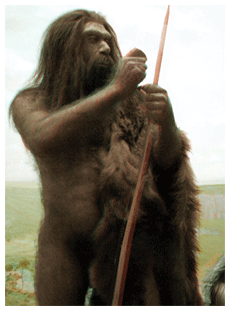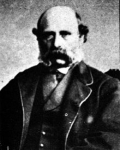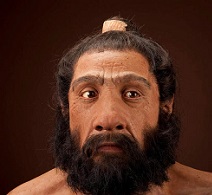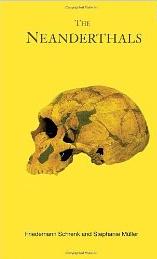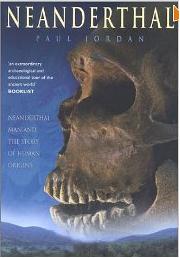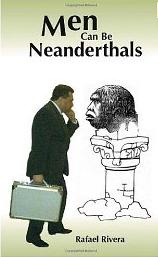- Latest Archaeology Updates
- Importance and applicability
- Famous Archaeologists
- Museums Collections
- Site Map
- World Heritage Sites
- World History Monuments
- Archaeological Organizations
- World Atlas of Archaeology
- Forensic Investigation and Geophysics
- Contact Us
- Movies based on Archaeology
- Frequently Asked Questions
- Archaeological discoveries
- Tell a Friend
- Archaeological Abbreviations
- Gallery Collections
- Famous-Museums site map
- Famous-archaeologists site map
- Archaeological Monuments site map
Neanderthal Man is an extinct species of the human lineage that lived in Europe and parts of Asia, circa 400,000 to 40,000 years ago. The species is classified as Homo neanderthalensis and is closely related to modern humans.
Neanderthals are known for their distinctive physical features, including a receding chin, short and stocky build, and large noses. They were also incredibly advanced for their time and were among the first species to use tools and fire. Neanderthals were also skilled hunters and scavengers, and they likely had complex social structures.
Neanderthals are believed to have died out due to a combination of climate change, competition with modern humans, and disease. They are also thought to have interbred with modern humans, and as a result, some modern humans today have Neanderthal genetic material.
- Neandertal man is a species of archaic Homo sapiens that lived in Europe and western Asia during the Pleistocene epoch. The species is named after the Neander Valley in Germany, where the first Neandertal remains were discovered in 1856.
- Neandertal man is thought to have descended from Homo heidelbergensis, an early species of Homo sapiens that lived in Europe and western Asia between 600,000 and 200,000 years ago. Homo heidelbergensis is thought to have evolved from Homo erectus, an early human species that lived in Africa and Eurasia between 1.8 million and 100,000 years ago.
- Neandertal man is thought to have emerged in Europe and western Asia around 300,000 years ago. They were a distinct species, with a unique combination of physical characteristics that set them apart from other Homo sapiens. These included a large and robust skeletal frame, a low and receding forehead, and a prominent nose.
- Neandertal man is thought to have lived in small, isolated groups and had a hunter-gatherer lifestyle. They used stone tools, controlled fire, and had a sophisticated language.
- Neandertal man is thought to have co-existed with modern Homo sapiens for thousands of years. However, by around 35,000 years ago, they had become extinct. The cause of their extinction is unknown, but it is thought to have been due to a combination of factors, including competition with modern humans, climate change, and disease.
- Neandertal artifacts and toolmaking refer to the tools and artefacts that were created by the Neandertals, an extinct human species. The Neandertals lived in Europe and the Near East from approximately 400,000 to 40,000 years ago. Their toolmaking skills were quite advanced and they used a variety of materials, including stone, bone, antler, and wood.
- Neandertal toolmaking was an important part of their culture and lifestyle. It allowed them to survive in the harsh conditions of the Ice Age and provided them with the means to hunt and gather food. Neandertal toolmaking is an important part of our understanding of human evolution.
- Neandertal tools were usually made by flaking and knapping stones. This involved hitting two stones together to produce sharp edges, which could be used for cutting and scraping. They also used other stone tools, such as hand axes, which were used for chopping and cutting.
- Neandertals also used wooden tools, such as spears and digging sticks. They also crafted tools made from antler and bone, such as awls and needles.
- Neandertals were also skilled in the use of fire. They used fire to cook their food, to keep warm, and for protection. They also used fire to make their tools, by heating stones to make them easier to work with.
The Neandertals were a group of archaic humans that lived in Europe and Western Asia from approximately 400,000 to 40,000 years ago. They were among the most successful and widespread groups of early humans and were the closest evolutionary relatives of modern humans, sharing 99.7% of their DNA.
Neandertal extinction is still a topic of debate among researchers. What caused their extinction is a complex topic and there is no single answer. Instead, multiple theories have been proposed, including climate change, competition with modern humans, and a genetic decline in their population.
-
Climate change :The most widely accepted theory suggests that climate change was the primary cause of Neandertal extinction. As the climate shifted from a warm, forested environment to a colder, drier one, the Neandertals were unable to adapt quickly enough to survive. This theory is supported by archaeological evidence of changing plant and animal distributions during this time period.
-
Competition with modern humans:Another theory proposes that competition with modern humans contributed to the Neandertal's extinction. As modern humans migrated into Europe and Western Asia, they brought with them new technologies, such as stone tools, weapons, and fire. These tools gave modern humans an advantage over the Neandertals, allowing them to outcompete and displace them.
-
Genetic decline :A third theory suggests that Neandertal extinction was due to a genetic decline in their population. This could have been caused by a number of factors, such as inbreeding, low population numbers, and a lack of genetic diversity.
The consequences of Neandertal extinction were far-reaching. Without them, modern humans were able to expand their range and population, leading to the development of civilizations and the development of technologies that have shaped our modern world. Additionally, without them, modern humans had to develop their own unique cultures and languages, which would not have been possible had the Neandertals survived.
Neandertal extinction has had a profound impact on human history. Despite the fact that we may never know the exact cause of their extinction, we can be sure that the consequences have been far-reaching and have helped shape the course of human history.
Books Related to Neanderthal Man
The Neanderthal: Written by Rafael Rivera
The Neanderthal is among the most mysterious relatives of Homo sapiens: Was he a dull, club-swinging muscleman, or a being with developed social behaviour and the ability to speak, to plan precisely, and even to develop views on the afterlife.
The NeanderthalsWritten by Paul Jordan
The story of Neanderthal man. Was he our direct ancestor, or was he perhaps a more alien figure, genetically very different? This title brings us into the Neanderthal's world, his technology, his way of life, his origins and his relationship with us.
Buried Alive: Written by Jack Cuozzo
In "Buried Alive", the author, a New Jersey orthodontist, concludes that the Neanderthals were in reality humans from the time of the biblical patriarchs.
Men Can Be Neanderthals: Written by Rafael Rivera
This book describes about Researches on Men Can Be Neanderthals.
Rich Resources on Java Man
Amesbury Archer (or King of Stonehenge) is an early Bronze Age man, dating to around 2300 BC. His grave is of particular importance because of the rich valuables and the earliest gold objects ever found in England.
Otzi the Iceman is well naturally preserved mummy of a man. The man who was been captured in Ice was believed to be over 53 centuries old (3300 BC).
Java man is an interesting discovery to note that the find was not a complete specimen, but consisted merely of a skullcap, a femur, and three teeth. Many scientists of the day even suggested that Dubois' Java Man might have been the so-called "missing link
Kennewick Man is the name for the remains of a prehistoric man found on a bank of the Columbia River near Kennewick, Washington, on July 28, 1996. The Kennewick Man news story is one of the most significant archaeology stories of contemporary times.
Neandertal1 or Neanderthal was a species of genus Homo (Homo neanderthalensis) that inhabited Europe and parts of western Asia during the last ice age.
Peking Man (sometimes now called Beijing Man), also called Sinanthropus pekinensis (currently Homo erectus pekinensis), is an example of Homo erectus.
The Red Lady of Paviland is a fairly complete Upper Paleolithic-era human male skeleton dyed in red ochre, discovered in 1823 by Rev. William Buckland in one of the Paviland limestone caves of the Gower Peninsula in south Wales, dating from c29,000.
The Tollund man lived during the late 5th century BC and/or early 4th century BC, about 2,400 years . He was buried in a peat bog on the Jutland Peninsula in Denmark, a find known as a bog body.
Turkana Boy, the designation given to fossil KNM-WT (Kenya National Museum-West Turkana), is a nearly complete skeleton of a 12-year-old hominid boy who died 1.6 million years ago.Turkana Boy is classified as either Homo erectus or Homo ergaster.
The Dead Sea Scrolls are a collection of about 850 documents, including texts from the Hebrew Bible, which were discovered in eleven caves near Qumran, in a fortress northwest of the Dead Sea in Israel.
The Narmer Palette, or Great Hierakonpolis Palette, is a significant Egyptian archeological find, dating from about 3200 BC, containing some of the earliest hieroglyphic inscriptions ever found, and depicting the unification of Upper and Lower Egypt under Narmer.
Rosetta Stone is a dark granite stone (often incorrectly identified as "basalt") which provided modern researchers with translations of ancient text in Egyptian demotic script, Greek, and Egyptian hieroglyphics.
Linear B is the script that was used for writing Mycenaean, an early form of the Greek language. It occurrs primarily on tablets dated from the 14th and 13th centuries BC.
The Sweet Track is an ancient roadway in the Somerset Levels, England. As of the early 2000s, it is the oldest known engineered roadway in the world. An grand footpath that ran for almost 2km across the Somerset levels swamps.
Tautavel Man is an ancestor of Neanderthal man, was slightly different from his contemporaries living Asia and Africa. In the village of Tautavel is located in the South of France, one of the most ancient humans was found: the Tautavel Man.
The Galilee Boat which is also referred as the "Jesus Boat" was found by local Galilean inhabitants in January 1986. The boat was wrapped in a polyurethane shell and then immersed in a special tank of water to avoid quick disintegration.
The monumental Ekron inscription is dated, statistically and historically, to the first half of the seventh century B.C.E. The five lines of the inscription are together with this in a slit open border.
It wasn't long back when a lot of scholars were quizzical the real survival of a Roman Governor with the name Pontius Pilate, the procurator who ordered Jesus' crucifixion. In June 1961 close to Caesarea-on-the-Sea (Maritima) was unearthed this appealing limestone block.
In 1990 ornately decorate limestone ossuary (bone depository) was found in Jerusalem's Peace Forest. In the ossuary were the bones of two babies, a adolescent child, a teenage boy, an adult woman, and a man about 60years of age.
In biblical Israel, papyrus was the main form of writing substance. Once an authorized deed was written, it would be rolled up, one end crinkled in one-third of the width and the contrary end likewise folded in.
It is the Capital city of a prehistoric principality in what these days is on the northern part of the Syrian coast, just north of the city of Latakia.

